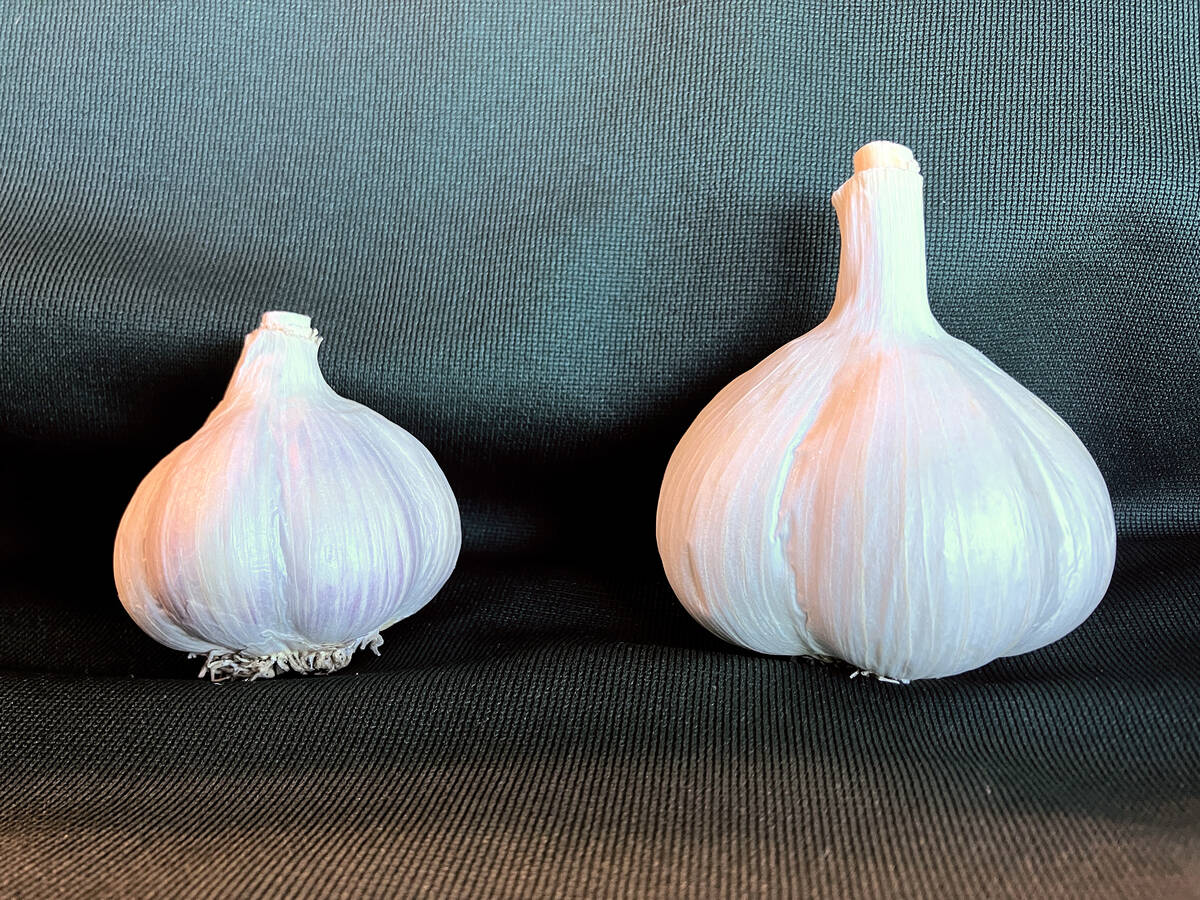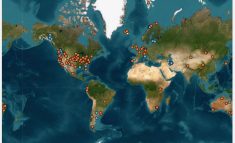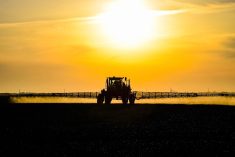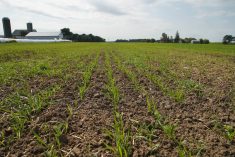On-farm trials across the province show just how challenging it is to make decisions on exact nitrogen use in crops, and how local the influencing conditions can be.
Several farmers talked about their 2023 trials at the Southwest Ag Conference in early January.
In Lambton County, Brad Podolinsky looked at three nitrogen rates in a corn field to figure out whether adding more nitrogen made sense for his farm. Rick Vandenbos, who farms near Binbrook, was looking for similar information.
Read Also

Clean seed garlic promises bigger bulbs and higher returns for growers
Ontario garlic trials show clean seed outshines conventional yields, with stronger drought resilience, reduced virus risk and greater economic outcomes.
The way the two tackled the problem was a testament to differences in equipment and environment on farms in Ontario and how those factors affect on-farm trials.
Podolinsky, who worked in conjunction with the Lambton Soil and Crop Improvement Association, used John Deere’s Operation Centre to record information on the project. He used three rates of nitrogen.
The normal treatment is a three-pass system: 30 pounds at planting, about 100 as a side dress and then 60-70 lb. with a y-drop system later in the season.
There is some variable rate application using the y-drop system because it has the capability, which the side dress applicator does not.
To run the trial, the application script was uploaded to the sprayer and liquid fertilizer was applied. Results were measured using the yield monitor on the combine and data was uploaded to the John Deere cloud-based system.
“By the time I got back to the shop, it was already in Operations Centre,” said Podolinsky.
Total nitrogen for the three applications was 30 lb., 195 lb. and 230 lb. Yields were about 153 bushels per acre for the 30 lb. application, 200 per acre for the 195 lb. application and about 207 per acre for the application of 230 lb. of nitrogen.
The most surprising result for Podolinsky was that 30 lb. of nitrogen got him more than 150 bushels of corn.
“I was a little shocked that 15 per cent of my normal practice got me 80 per cent of my yield,” he said.
He speculated that the amount of rain in that field caused nitrogen loss.
“I figure in my two higher rate zones, we lost a fair bit of N.”
His normal rate of 195 lb. as applied per acre still made financial sense based on $6 per bushel corn and the $500 per tonne cost of 28 per cent liquid nitrogen fertilizer. The extra 35 lb. of nitrogen would also have been profitable.
The results helped Podolinsky confirm the nitrogen rate he has been using.
“I don’t think we’ll change a whole lot. We might bump it up a bit, but I’m pretty happy with how the results show.”
Across southern Ontario, near Binbrook, Vandenbos farms crops and hogs with two partners. He says the farm has traditionally applied a low rate of fertilizer, but wondered if that should change to get better yield.
The hog farm needs clean corn, so it’s critical to manage mycotoxins that produce deoxynivalenol (DON). That means yield isn’t the only driver in corn production on their farm and they did some fungicide trials in 2023.
Vandenbos says the farm has regularly conducted trials, but it is low tech compared to Podolinsky.
“I’m not a great IT guy, so a bunch of years ago we actually invested in scales for the grain buggy,” says Vandenbos. This allows quick access to data on small areas in a field.
The partners have watched how fungicides worked on the farm since starting to use them on corn in 2019. Last year, fungicides were an obvious winner in a wet year, he said.
Some trials showed a 15-bushel difference, although “it’s really hard to get fungicide to pay back purely on yield”, but the emphasis on reducing DON is important and that showed up in the treated versus non-treated plots.
The farm’s nitrogen trial was spawned by a program put together by Clark Agri Service to figure out what it would take to get to 300 bushels per acre of corn.
Clark Agri Service agronomist Johanna Lindeboom worked with Vandenbos on increased nitrogen rate trials.
“We’ve always been a bit on the skinny side on nitrogen and we were getting really good response on pounds of nitrogen on actual yields and she wanted us to see how far we could push it,” said Vandenbos.
Their total applied nitrogen is usually around 134 lb. per acre, which meant about 0.7 to 0.8 lb. of nitrogen per bushel of corn.
In 2023, tissue tests showed a need for more nitrogen so it was applied using y-drops. They also tried a high-yield test area with 40 gallons per acre of 28 per cent nitrogen liquid fertilizer, as well as an area of no additional nitrogen and an area with 15 gallons.
The result was a yield of 234 bushels per acre, which Vandenbos says is quite good for their area. But there was little gain from the additional nitrogen – about two bushels across the three strips.
“I was really disappointed with that because we said we’re gonna push it and we’ll see something substantial. However, it did tell us something. It’s not all in nitrogen.”
Like Podolinsky, Vandenbos expects that with late-season moisture and increased temperatures, a lot of the nitrogen was mineralized and not used by the plants.
The plan is to run a similar but smaller trial in 2024, and also look at other areas, such as starter fertilizer.
He encourages farmers to run their own trials because it contributes to learning and adds some fun to farming.
How much N are you losing?
Farmers know that not all the nitrogen they apply is taken up by crops. That’s a frustration because they’ve paid for that fertilizer and also because the excess ends up in the environment.
A Brant Soil and Crop Improvement Association project looked at the use of simple dosimeters to measure nitrogen loss.
A dosimeter measures types of radiation and is used by people who work in areas where they could be exposed to radiation. But dosimeters can also measure nitrogen loss in fields with some simple processes and shielding.
Holly Loucas of Corteva helped manage the project and talked about it at the conference.
She gave credit for paving the way to Greg Stewart, former OMAFRA corn specialist who is now with Syngenta, and Marijke Vanderlaan, also now with Syngenta, who conducted her master’s degree research on how to correlate nitrogen loss and dosimeters.
In the study, the dosimeter is clipped to a stake and then a pail with certain-sized and placed holes is put over the stake. The dosimeters turn a pinkish purple colour when sulphuric acid reacts with ammonia leaving the soil as the nitrogen volatilizes.
The parts per million reading can be recorded from the dosimeter and calculations run to determine nitrogen loss.
Tyler McBlain installed three of the units in a corn field at his farm. Two were in rows. One had added water put into the bucket as simulated rain and the other had no extra moisture treatment. The third bucket was in a row where the planter skipped, so it had more exposed soil.
Farmer cooperators checked the dosimeter daily to record the data.
McBlain wants to see more years of trial for the system, but his one-year takeaway was that there was less loss from the area that had full canopy than the one without and the one that had more water applied. That validates his decision to apply more nitrogen later in the year at a variable rate using y-drops.
Loucas was pleased with the results.
“I think in every situation where we had one in the field, we were able to measure nitrogen loss to some extent.”















